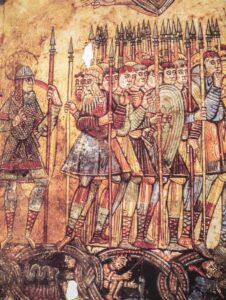
According to the CDC website, smallpox has been documented since the 3rd century BC. By the 6th Century smallpox had spread across India, Asia, Africa, and Turkey; from the 11th to the 13th centuries, the Crusades spread it into Europe.
Were you aware that the use of vaccinations to prevent epidemics has ties to the harems of Ottoman Turkey?

 Edward Jenner has historically been credited with developing the smallpox vaccine, however this is not the case.
Edward Jenner has historically been credited with developing the smallpox vaccine, however this is not the case.
It’s known that vaccinations existed in the Ottoman Courts since the late 1600s, when traders from Circassia (in the modern-day Caucasus region) brought women as potential slaves to the Ottoman Court.
At that time, women from Circassia were in high demand due to their great beauty. While the means of bringing them to the Court and the reasons why don’t hold up to today’s standards, these women also brought their knowledge of smallpox vaccines into the harems and the Ottoman Empire.
How did the vaccine get to Europe? Enter English aristocrat Lady Mary Wortley of Montague.
 In 1715, Lady Montague suffered from smallpox as a young woman, leaving her face disfigured. Two years later, her husband was appointed ambassador to the Ottoman Court; while a man would never be allowed access to the Harem Quarters, European women were sometimes provided access and Lady Montague was one of these women. Her personal experience with smallpox made her determined to ‘do something’, and after observing vaccinations occurring in the Harem, she was so determined to prevent smallpox she ordered the embassy surgeon to inoculate her young son. Three years later, upon their return to London, she had her young daughter vaccinated in the presence of physicians of the British Royal Court. And the rest, as they say, is history.
In 1715, Lady Montague suffered from smallpox as a young woman, leaving her face disfigured. Two years later, her husband was appointed ambassador to the Ottoman Court; while a man would never be allowed access to the Harem Quarters, European women were sometimes provided access and Lady Montague was one of these women. Her personal experience with smallpox made her determined to ‘do something’, and after observing vaccinations occurring in the Harem, she was so determined to prevent smallpox she ordered the embassy surgeon to inoculate her young son. Three years later, upon their return to London, she had her young daughter vaccinated in the presence of physicians of the British Royal Court. And the rest, as they say, is history.
